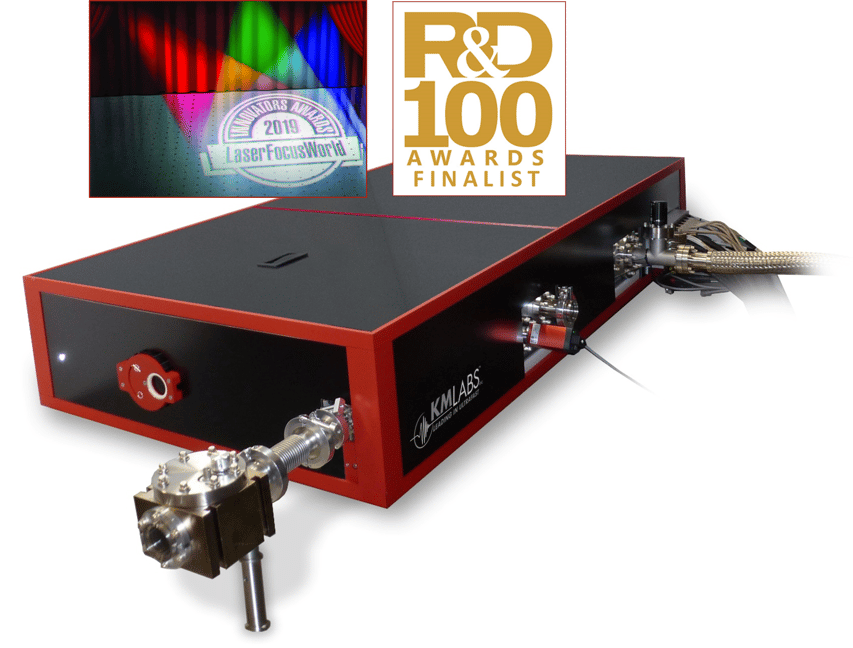
KMLabs Hyperion VUV, a 2019 Laser Focus World Platinum-level Innovators Award and an R&D 100 Awards Finalist, provides bright femtosecond pulses at numerous wavelengths across the vacuum ultraviolet (VUV) region, from 6.0 eV (205 nm) to 10.8 eV (115 nm). The discrete tunability of the KMLabs Hyperion VUVTM vacuum ultraviolet source enables researchers to study a wide range of materials and materials properties. A simple computer-selected change of photon energy provides a powerful capability, previously only available at a synchrotron; this ability to easily change the laser wavelength can enhance many experiments. For example, in angle-resolved photoemission (ARPES) experiments, this tunability allows researchers to distinguish surface effects from bulk effects. For time-of-flight (ToF) studies of molecules, the tunability can distinguish otherwise identical isomers.
Hyperion VUV is also highly focusable, and the appropriate optics can be used to reach spot sizes below 10 microns. This ability will allow researchers to examine new types of samples, including materials that are polycrystalline, spatially inhomogeneous, faceted, or simply very small.
Hyperion VUV produces pulses with durations below 250 femtoseconds, enabling scientists to probe ultrafast dynamics of molecules and materials. The 1 MHz repetition rate enables rapid data collection and avoids space-charge effects.
Additionally, Hyperion VUV is “application ready,” including the appropriate focusing and beam-steering elements to enable fast integration with experimental apparatus. Importantly, Hyperion VUV can be used with a window between the source and the experimental chamber, guaranteeing that applications demanding ultrahigh vacuum (such as ARPES) will remain contamination-free.
In addition to ARPES, Hyperion VUV will enable breakthrough research in photoemission electron microscopy (PEEM), photoionization mass spectroscopy (PIMS) for combustion research, and other studies of next-generation materials and molecular systems.
Hyperion VUV
Applications:
| Photon Energy | Size | Repetition Rate | Power Stability |
| 6.0, 7.2, 8.4, 9.6, 10.8 eV | 2.5 x 5 feet (0.75 to 1.5 meters) |
1 Mhz | <5% [RMS] |
| Photon Flux
|
Full bandwidth (~40 meV)
|
Moderate bandwidth (< 5 meV) |
|
| 7.2 eV | 1012 ph/s delivered |
5x1010 ph/s delivered |
|
| 10.8 eV | 1010 ph/s delivered |
5x108 ph/s delivered |
|

David E. Couch, Daniel D. Hickstein, David G. Winters, Sterling J. Backus, Matthew S. Kirchner, Scott R. Domingue, Jessica J. Ramirez, Charles G. Durfee, Margaret M. Murnane, and Henry C. Kapteyn
https://doi.org/10.1364/OPTICA.395688
© Copyright 2018-2024 KMLABS leading in ultrafast All Reserved | Privacy Policy